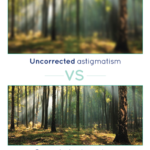Common Eye Conditions
There are many common eye conditions that can compromise good vision. An important part of our practice at Heritage Eye, Skin And Laser Center is to detect, manage, and resolve these eye conditions in order to help our patients see more clearly. An important part of detecting eye conditions is through regularly scheduled comprehensive eye exams. From presbyopia, astigmatism, farsightedness, nearsightedness, and other common conditions, to more serious problems such as retinal detachment, our doctors are equipped to handle almost any eye condition.





 This disorder is caused by structural changes in the cornea that cause it to take on a conical shape, rather than the normal curved shape. Over time, keratoconus can cause significant visual distortion, including nearsightedness and astigmatism. Specialized custom contact lenses help control the symptoms of keratoconus for many patients, and corneal transplant surgery is also an option in advanced cases.
This disorder is caused by structural changes in the cornea that cause it to take on a conical shape, rather than the normal curved shape. Over time, keratoconus can cause significant visual distortion, including nearsightedness and astigmatism. Specialized custom contact lenses help control the symptoms of keratoconus for many patients, and corneal transplant surgery is also an option in advanced cases.